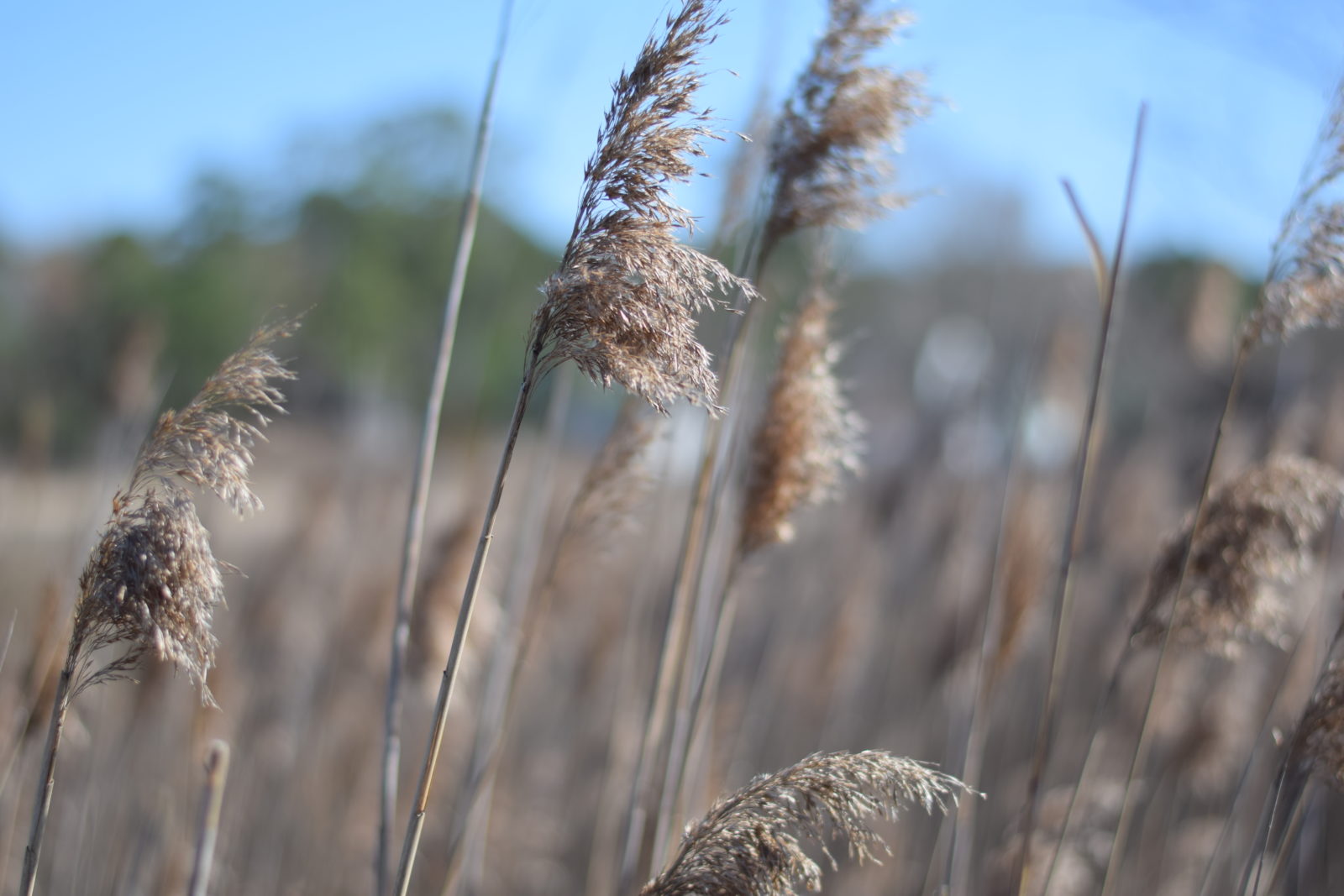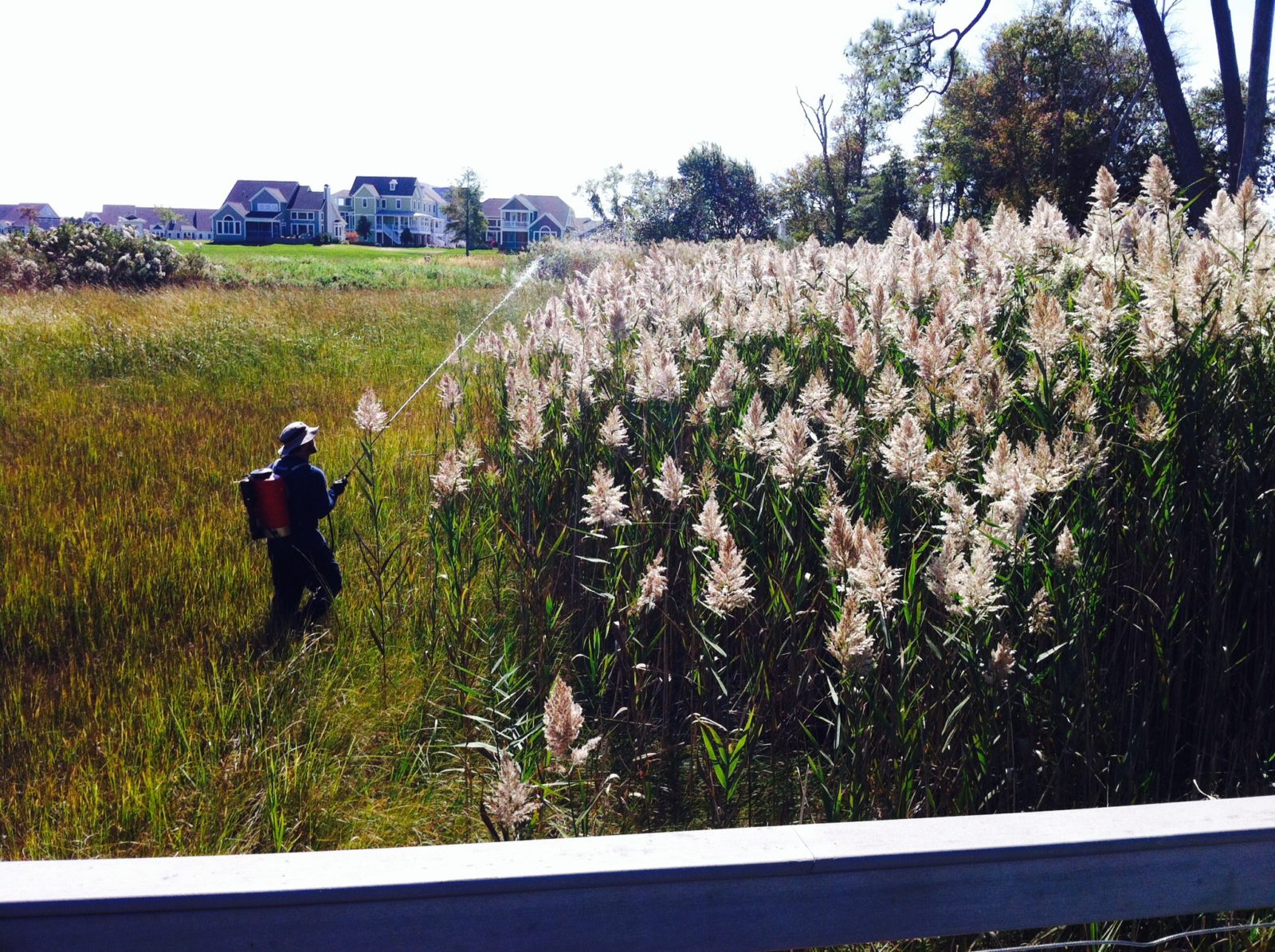
The Vectors of Invasive Phragmites Spread & Effective Control Methods
Updated: September 7th, 2023
Plants become classified as invasive species when they invade areas outside of their native range, upset the natural community they have invaded and cause considerable damage to either the ecology or economy of an area. Phragmites australis, or common reed, is a plant that most definitely meets all of these criteria. Native to Europe and Asia, invasive Phragmites is an aggressive colonizer of a variety of wetland habitats across the United States. Once established, the nuisance plant’s growth habits allow it to quickly outcompete most native species, ultimately creating a dense monoculture which reduces species richness and overall habitat value. As a result of these invasive characteristics, Phragmites has become a significant threat to freshwater and coastal wetlands across the country.

Whether managing established Phragmites colonies or endeavoring to prevent its introduction, it is critically important to understand the plant’s methods of reproduction and dispersal. Phragmites is spread through several means, called vectors. The natural reproduction of Phragmites is accomplished in three ways: by seed, rhizome fragmentation and the use of stolons. Seeds can be spread by the wind, wetland birds, surface currents and wave action as well as on recreational and construction vehicles. Expansion through the development of stolons (lateral vegetative growth of the stem), also allows for very rapid spread of the infestation. Rhizomes, the underground root structures of the plant, when fragmented through land disturbance or other natural processes such as erosion, have the potential to become re-rooted in any suitable area they are deposited. ATVs and construction vehicles can also be vectors of rhizomal spread if the root debris is not removed when leaving a Phragmites infested area.
Successful Phragmites control can be achieved by employing several methods. Experience and the use of specialized equipment are vital when managing this species given the sensitive nature of the environments that it colonizes. However, like any other non-native plant control project, the first step is an assessment of the infestation. Fully understanding the extent of the growth, the bordering and intermixed native plant assemblage and the general terrain are essential to the development of a successful invasive species management plan.

Once the overall scale of the infestation is determined, the proper application of labeled aquatic herbicides is often the most effective and least disruptive means of achieving sustained long-term control. Given the remote and sensitive nature of the environments that Phragmites colonizes, it is often necessary to employ the use of specialty low ground pressure amphibious track vehicles to access and manage these plants. Herbicide applications and operation of this specialized equipment should only be undertaken by a trained and experienced lake, wetland or stormwater professional.
Post herbicide application, cutting and mulching of the Phragmites culms is often beneficial in accelerating the rate of native plant recolonization. The removal of the dead stalks, which can in many cases be over 15 feet tall, allows improved sunlight exposure to the marsh deck or wetland floor that facilitates germination of the dormant native seed bank. Eliminating this considerable plant biomass also facilitates improved identification and access of Phragmites regrowth that will require follow-up control measures in subsequent years. Although successful Phragmites control is a multi-year endeavor, 3-5 years of annual management typically yields a greater than 95% reduction in the infestation and, more importantly, successful re-establishment of a native plant-dominated assemblage.
SOLitude Lake Management is committed to providing full service lake and pond management solutions that improve water quality, preserve natural resources, and reduce our environmental footprint. Our services include lake, pond and fisheries management programs, algae and aquatic weed control, mechanical harvesting, hydro-raking, installation and maintenance of fountains and aeration systems, water quality testing and restoration, bathymetry, lake vegetation studies, biological assessments, habitat assessments, invasive species management and nuisance wildlife management. Services, consulting and aquatic products are available to clients nationwide, including homeowners associations, multi-family and apartment communities, golf courses, commercial developments, ranches, private landowners, reservoirs, recreational and public lakes, municipalities, parks, and state and federal agencies. Learn more about SOLitude Lake Management and purchase products at www.solitudelakemanagement.com.









